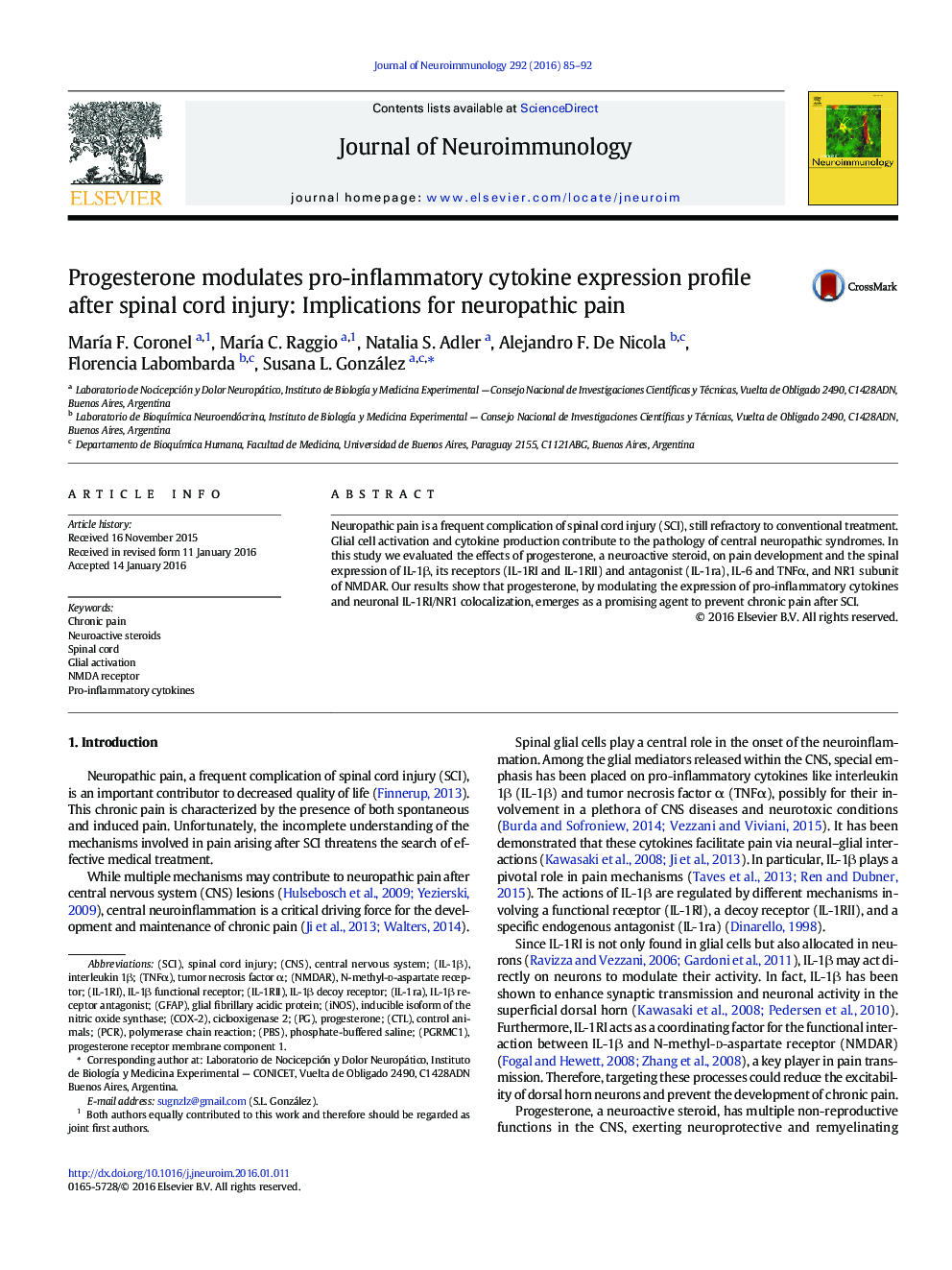| Article ID | Journal | Published Year | Pages | File Type |
|---|---|---|---|---|
| 6020135 | Journal of Neuroimmunology | 2016 | 8 Pages |
Abstract
Neuropathic pain is a frequent complication of spinal cord injury (SCI), still refractory to conventional treatment. Glial cell activation and cytokine production contribute to the pathology of central neuropathic syndromes. In this study we evaluated the effects of progesterone, a neuroactive steroid, on pain development and the spinal expression of IL-1β, its receptors (IL-1RI and IL-1RII) and antagonist (IL-1ra), IL-6 and TNFα, and NR1 subunit of NMDAR. Our results show that progesterone, by modulating the expression of pro-inflammatory cytokines and neuronal IL-1RI/NR1 colocalization, emerges as a promising agent to prevent chronic pain after SCI.
Keywords
(IL-1β)(PG)(PBS)Control animals(PCR)(TNFα)(GFAP)(iNOS)(CNS)NMDA receptorSpinal cord injuryNeuroactive steroidsinterleukin 1βtumor necrosis factor αprogesterone receptor membrane component 1chronic painPro-inflammatory cytokinescentral nervous systemSpinal cordGlial activationPhosphate-buffered salinepolymerase chain reactionGlial fibrillary acidic proteinProgesteroneN-methyl-d-aspartate receptor
Related Topics
Life Sciences
Immunology and Microbiology
Immunology
Authors
MarÃa F. Coronel, MarÃa C. Raggio, Natalia S. Adler, Alejandro F. De Nicola, Florencia Labombarda, Susana L. González,
